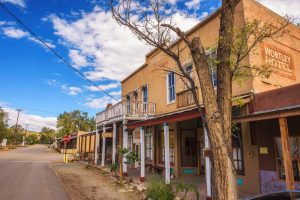
In the Southwest, you will frequently run into the terms arroyo, wash and and maybe even the term wadi. These rambling water courses, sometimes full, sometimes dry, give Arizona, New Mexico, Colorado and Utah their character and are often some of the most beautiful spots in the country. The landscape sometimes looks like a crumpled piece of brown paper, with each crease indicating yet another wash or arroyo.
An arroyo is a Spanish word that translates to brook, also referred to as a dry creek or streambed. In short, it is a gulch that temporarily or seasonally fills and flows after sufficient rain.
Wadi is a similar term in Africa and Asia. A wadi is a valley, gully, or streambed in northern Africa and southwest Asia that remains dry except during the rainy season.
In the Western U.S., a Wash is the dry bed of a stream which flows only occasionally, usually in a ravine or canyon.
In short, they all mean pretty much the same thing and because America is such a melting pot of cultures, as people moved into the area, they applied the term they knew. Now every dry streambed or low spot carries the name wash, arroyo or wadi.
Some of the most dramatic and beautiful washes or arroyos are slot canyons. During Monsoon season, huge amounts of water can fall from one storm and carve its way deep into the soft sandstorm that underlies much of the Southwest. The most famous and perhaps the most beautiful of all these places is Antelope Canyon. Located on Navajo land near Page, Arizona, Antelope Canyon includes two separate, photogenic slot canyon sections, referred to individually as Upper Antelope Canyon or The Crack; and Lower Antelope Canyon or The Corkscrew.
During much of the year, the canyon and most of the washes and arroyos are completely safe, but freak thunderstorms (even storms miles away) can send torrents of rain racing at incredible speeds down these dry beds. On August 12, 1997, eleven tourists, including seven from France, one from the United Kingdom, one from Sweden and two from the United States, were killed in Lower Antelope Canyon by a flash flood. The lone survivor of the flood was tour guide Francisco “Poncho” Quintana, who had prior swift-water training. Thanks to this tragic event, the Navajo allow only guided tours to visit Antelope Canyon.




